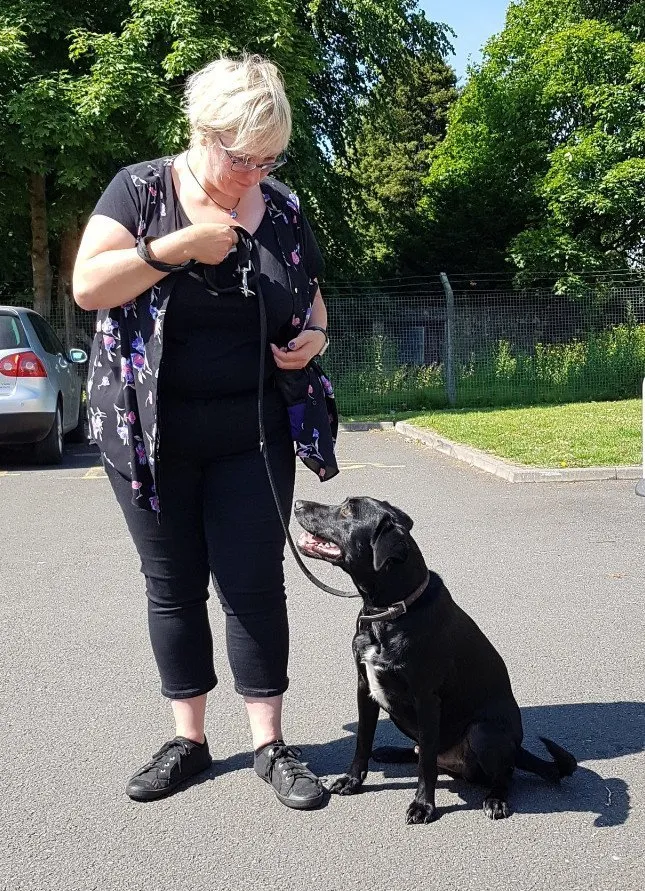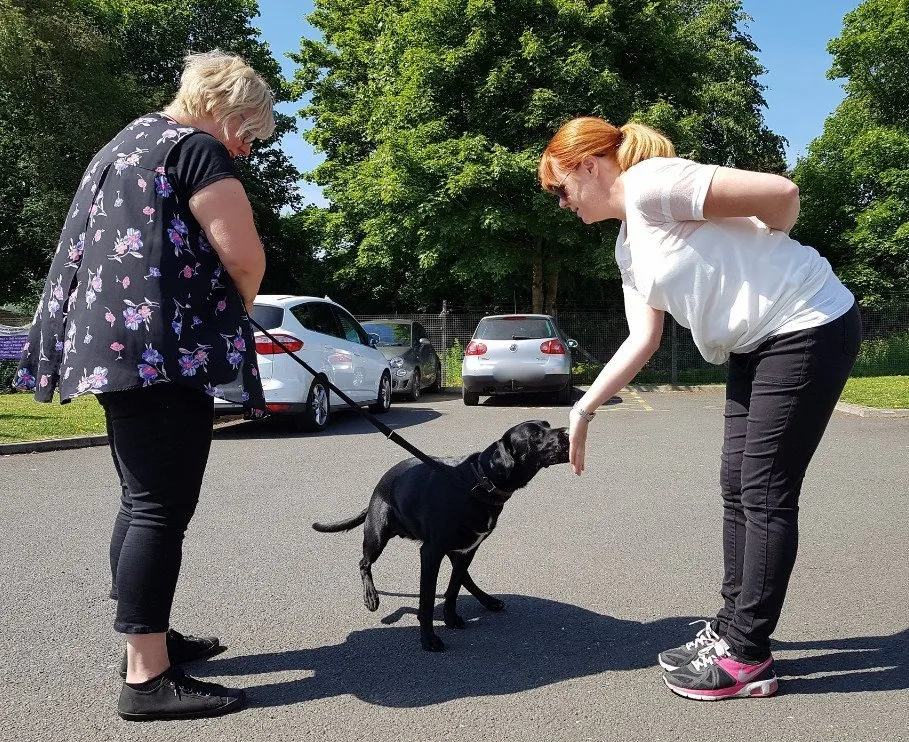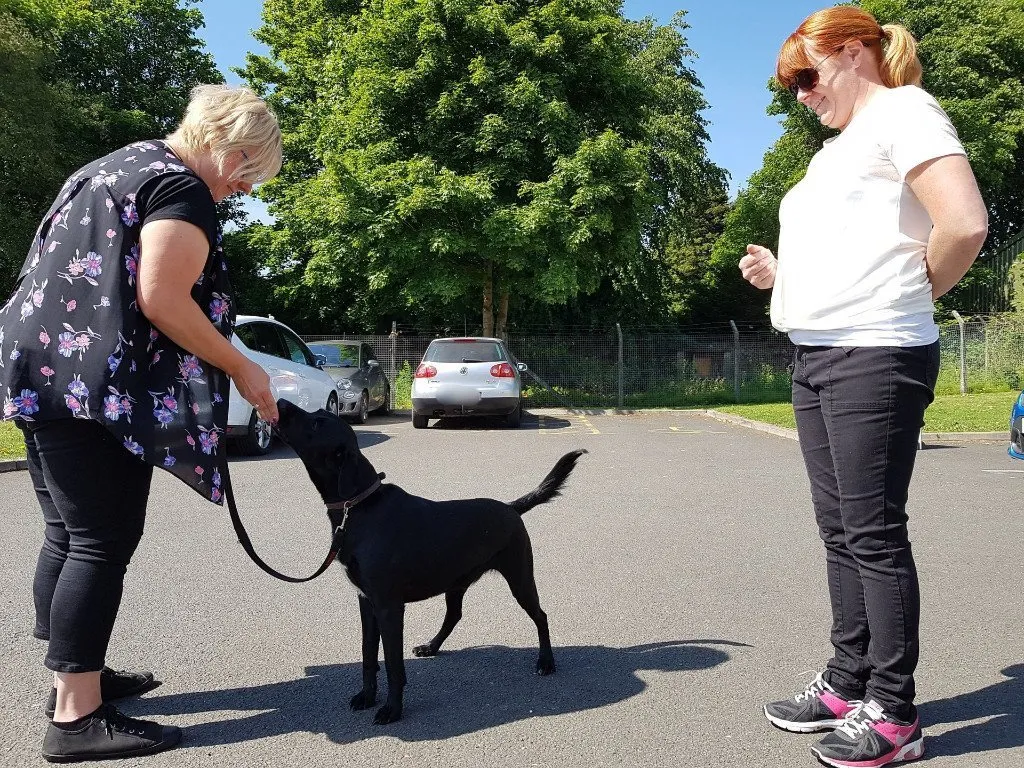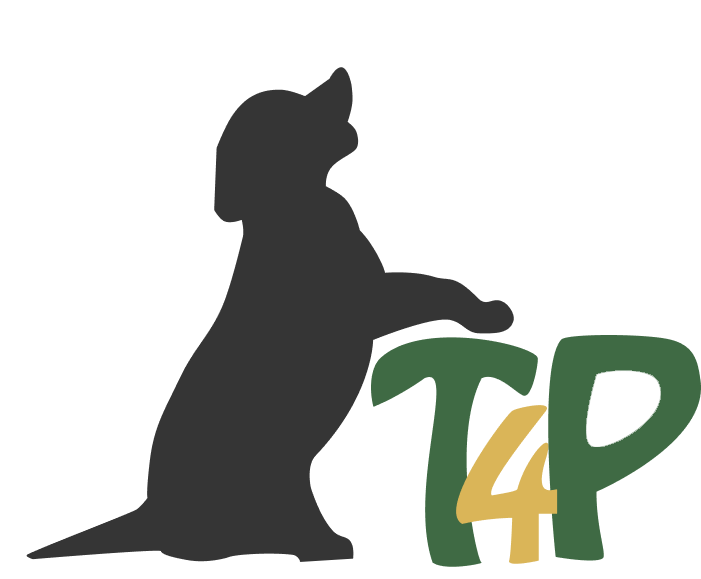Go and say hi to people the polite way
Your dog jumps up on people? Teach him to go and say hi the polite way!
The Games Dog People Play… in Scotland
Alfie loves people and would like to say hello to everyone. Whenever the Labrador-Springer Spaniel mix sees a person approaching from a distance, he starts to wiggle his tail. If this person stops to talk to Karen, Alfie jumps up on this person enthusiastically. Unfortunately, his super friendly nature is Alfie’s problem, because Alfie is in the training as an assistance dog at Lothlorien Dog Services and is supposed to learn to ignore strangers during his working hours. Alfie’s guardian Karen relies on a stick while walking. If Alfie jumps on the leash, there is a risk that Karen loses her balance and falls. To better control Alfie’s impulsive behavior, she uses a headcollar* that restricts Alfie’s vision and freedom of movement and involves serious health risks.
Embarrassing situations
Enthusiastic welcome kisses in the faces of visitors or muddy paws on the clothes of uninvolved passersby put many dog owners in awkward situations. Often the dog is then scolded or pulled back on a leash, with the result that the sight of humans builds up a negative association for the dog. Especially Labradors and Spaniels are extremely friendly, because they were bred for close cooperation with humans and therefore make great assistance dogs.
Which behaviour do you want to reinforce?
If a dog jumps up on somebody, then the behavior is almost always reinforced: either the human cuddles the dog or he fends him off, but always is there a direct, physical interaction between human and dog. Even negative attention in the form of ranting or pushing the dog away, is attention that reinforces the behavior. It will therefore be shown more and more frequently in the future.
A much better strategy is to teach the dog a default alternative behavior before he even has the opportunity to jump up.
The “Go say Hi – Game”
Claire shows Karen and Alfie a way in which Alfie can say hello to people calmly and politely without putting Karen in danger.
Most people greet a dog by reaching out to the dog, so that the dog can have a sniff. We use this for the training with Alfie. When a person approaches, Karen asks Alfie to sit. As soon as Alfie’s bottom touches the floor and he is focused on Karen, she sends Alfie with a friendly “Go say hello” to greet the person. Alfie then turns to the person and touches the outstreched palm briefly with his nose. Karen marks the touch of Alfie’s nose on the palm, whereupon Alfie turns again to Karen to pick up his treat.
The Protocol
Karen needs Claire as an assistant, as well as treats and a marker signal or a clicker.
The protocol is the same as for a simple hand touch, except that the hand belongs to a second person: Claire attrackts Alfie’s attention and reaches out her hand. When Alfie curiously touch Claire’s hand with his nose, Karen marks and gives him a treat. Claire and Karen repeat this several times. When Alfie performs the behavior reliably, it is time to introduce the cue “Go say hello”.



What can go wrong?
Alfie is not interested in Claire’s outstretched hand. In this case, Claire pinches a treat between her fingers. After a few repetitions, Claire reaches out without the treat. Alfie will expect the treat and touch Claire’s hand with his nose anyway. This is the moment Karen marks and then rewards.
Alfie jumps toward Claire as she approaches, before she even has the chance to reach out her hand. It’s important that Karen already asks Alfie to sit before he gets the idea to jump up on Claire, as Alfie will otherwise learn an unwanted behaviour chain.
For advanced players
After a few repetitions, Alfie only turns to Claire wagging, he does not even touch her hand with his nose. That is absolutely ok as this game is not about doing a clean hand touch, it’s about disenganging from the other person and engaging with Karen. Physically touching the other person is now not so important for Alfie anymore, since he gets his reinforcement for saying hello from Karen.
A win-win situation
With this game Karen kills two birds with one stone: Alfie is happy because he is still able to say hi to people. The reinforcement however doesn’t come from the stranger, but from Karen. She is thus the heroine, the positive and empowering factor for Alfie and no longer the nagging pain in the neck who desperately tries to keep Alfie from saying hi. The “Say Hi Game” is super simple and effective. It gives Alfie the opportunity to continue to greet people under stimulus control without pulling on a leash and putting Karen in danger.
At the end of the session, Karen has developed so much confidence in Alfie that she even tries leashwork without the headcollar.
Variation for fearful dogs
The “Say Hi Game” with its nose touch is NOT suitable for dogs that are afraid of humans and show calming signals when approaching strangers or who like to keep strangers at a safe distance with a “stay-away-from-me” bark! The physical closeness and the touch of the nose cause a frightened dog into a serious conflict, because basically he would like to earn the treat but at the same time move away from the stranger. Internal conflicts more likely lead to aggression.
In anxious and reactive dogs, we positively associate the sight of a human with the expectation of food from a safe distance. Play the Engage – Disengage Game with your fearful dog.
*Note:
Leading a dog on a headcollar is recommended only as a temporary management measure and under the guidance of a knowledgeable trainer. If the headcollar is improperly used, the dog can build up pressure on the cervical vertebrae which can lead to serious damage.
